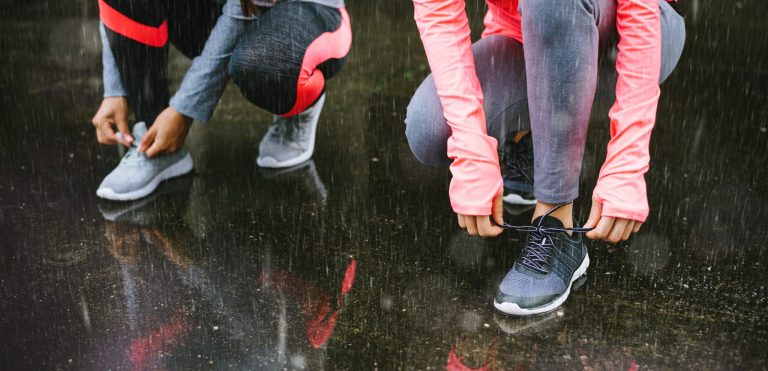A pleasant jog in the sun, just what you were waiting for after those cold winter months. And while springtime runs can be pleasant, as we move into the summer months and that temperature gauge rises, there are some extra precautions you need to take to stay safe while running in humidity and heat.
Running in heat and humidity
Training in the summer months isn’t easy; it’s one of the reasons why lots of competitive races take place in fall when the weather is more comfortable and bearable.
Summer running is tough whether you run for pleasure or sport; the sun is beating down on you, the air is hot and humid, making your body feel heavy… and that’s all before you even start.
In this article, we’ll introduce you to the differences between heat and humidity and learn risks and techniques for running in these conditions.
How to run in heat and humidity––differences, risks, and tips
While heat and humidity often occur together, they are not necessarily mutually exclusive concepts––humidity never happens without heat, but heat can happen without humidity.
Running in hot weather
Heat is a simple concept, it is what happens when the temperature rises, and it becomes too hot to get in a productive run. There are a number of risks associated with running in scorching weather. These include:
Dehydration
In warmer weather you are likely to sweat more, this, in turn, has numerous effects on your body.
Headaches
Another side effect of dehydration, and intense sunshine. Aside from the sun beating down on you, if you lose too much fluid, you’re likely to be left with quite a sore head in return from the lack of hydration.
Heat cramps
As you lose water, your body’s potassium levels are likely to be affected causing additional cramping. This makes for painful running.
Exhaustion
Combine dehydration, exercise, headaches, and heat cramps, and you’re likely to be left exhausted. Overexerting yourself can mean longer recovery times and less productive exercise overall.
Heatstroke
One of the more severe effects of running in sunny weather, heatstroke is what happens when your body’s temperature is pushed over a certain limit, around 105ºF. If not notice you are becoming dizzy or confused, seek medical help right away.
Top tips for running in the heat
1. Chose the best time of day to run
Even in the hottest of summer weathers, there will be times during the day when the heat is less intense, most likely early morning and evening. Avoid mid-day runs and take care not to overheat.
2. Drink water
Keeping your body hydrated is the best way to avoid dehydration. If you’re running in the hot, summer heat, make sure you have plenty of water to drink before, during and after your run.
3. Keep an eye on your temperature
While it's normal for your temperature to rise a little as you exercise, be careful and ensure that you've not got too stuffy. If you start to feel light-headed, stop and take a break, preferably somewhere cool.
Running in humid weather
Humidity is the level of water vapor in the air, and aside from making in almost unbearable to be outside in summer weather, there are some additional effects for runners too.
Takes your breath away
And not in a good way. Although the summer sun is beautiful, there’s no romance here, that heat makes it difficult to breathe, leaving you feeling tired and heavy. For those who have asthma, COPD or other lung conditions this can be stressful, but even for the average runner, it creates less than ideal conditions.
Sweating fail
Due to the hot weather, you’re more likely to sweat; this perspiration helps cool your body down. However, during humidity, these drops stay on your skin instead of evaporating as they should, making it harder for your body to reduce its temperature in the way that it should.
Top tips for running in humidity
1. Know your body
Some people handle humidity better than others; it’s just the way it is. Get to know your body, and if you are one of those people who can “take the heat.”
If not, as the saying goes, it might be best to “stay out of the kitchen.” We don’t mean ditching your routine entirely but consider moving activities indoors to a well-airconditioned room, until the humid period has passed.
2. Pick your route carefully
Off-road nature runs could never be more in fashion when running in high humidity. As the roads of the concrete jungle absorb and reflect heat back to you, the trees and plants absorb the sun's rays and release oxygen, helping you feel fresher.
3. Manage your expectations
When running in humid weather, it’s essential to manage your expectations. Try to focus more on how your body feels during and after the run, and less on run-times or other measures of success. Humid weather means tougher conditions, so cut yourself some slack.






